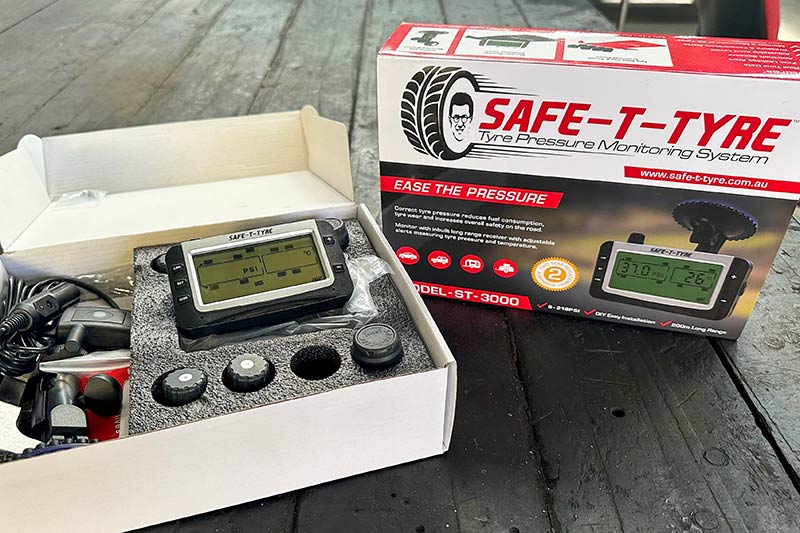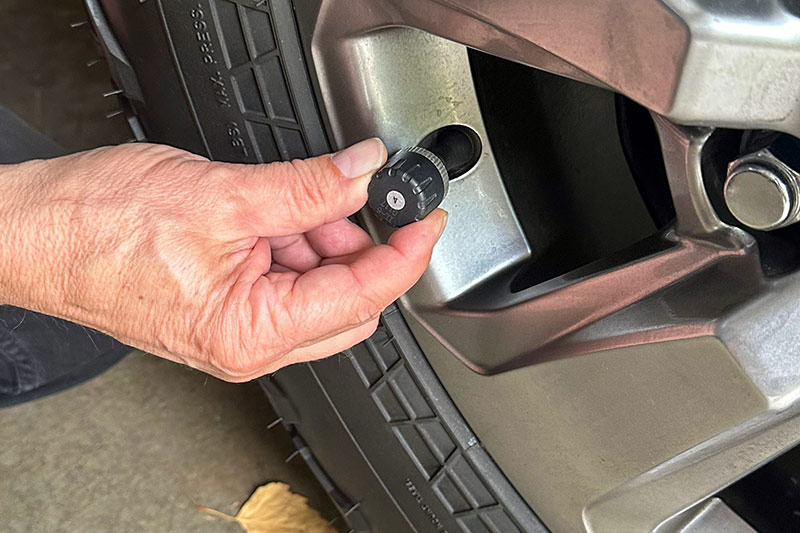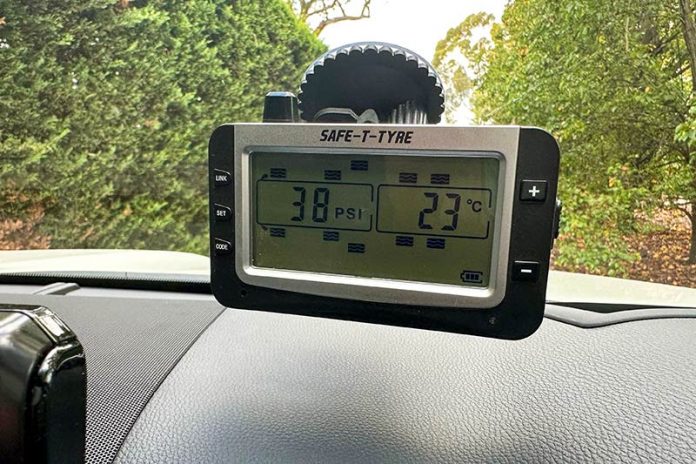Picture this: you’re on a picturesque road trip, towing your caravan through the rugged outback. The sun is shining, and the adventure awaits. Suddenly, disaster strikes – a flat tyre. Whether you’re in the middle of nowhere or navigating a busy city street, dealing with a flat tyre can be a real challenge. But what if there was a way to prevent such situations? Enter tyre pressure monitoring systems (TPMS), the unsung heroes of road safety.
While blowouts are relatively rare, even slightly under-inflated tyres can have a significant impact on fuel economy and tyre life span. Plus, driving on under-inflated tyres compromises handling and stability, especially when towing heavy loads like caravans.
MY PERSONAL WAKE-UP CALL
I learned this lesson the hard way while traveling on the outskirts of Melbourne. My caravan tyre suddenly burst, leaving me stranded. With no safe place to pull over, I had to drive for over a kilometre on a shredded tyre. It was a nerve-wracking experience – one that could have been avoided.

At this year’s Victorian Supershow, I had the opportunity to meet Dave Cooper from Safety Dave. He introduced me to the benefits of tyre pressure monitoring systems. Here’s how they work:
Simple installation: A TPMS comprises a small battery-operated transmitter that screws onto your tyre inflation valve stem. This transmitter continuously monitors the exact tyre pressure and temperature. No messy wires – just a clean setup.
Dash-mounted receiver: The transmitted data is received by a dash-mounted screen. This screen is also battery-operated and rechargeable. It provides real-time information about each tyre’s status.
Expandable system: I began with a basic kit – a screen and four transmitters for my tow vehicle. Over the last two months, I have added more transmitters for my caravan’s tyres. But here’s the game-changer: I also installed two transmitters on my air-bag helper springs. Now I can ensure that my airbags maintain the correct inflation while towing.
Safety first: If your tyre pressure drops below a predefined threshold, an audible alarm sounds. This warning prompts you to take action – either re-inflate the tyre or change it before it goes completely flat.
CONVENIENCE AND PEACE OF MIND
A TPMS offers both convenience and safety. While it won’t prevent flat tyres altogether, it provides advance warning and assurance. So whether you’re exploring the outback or navigating city streets, you’ll have the peace of mind that comes from knowing your tyres are at optimal pressure.

Remember: properly inflated tyres not only save you from potential disasters but also enhance your overall driving experience. So next time you hit the road, consider investing in a TPMS – it might just be the difference between a smooth journey or a tyre-related headache.
Finally, a big ‘thank you’ to the support team at Safety Dave, who were always ready to take my calls and provide technical assistance as I expanded my Safety Dave TPMS to include my caravan’s tyres and air-bags.
More information: www.safetydave.com.au






